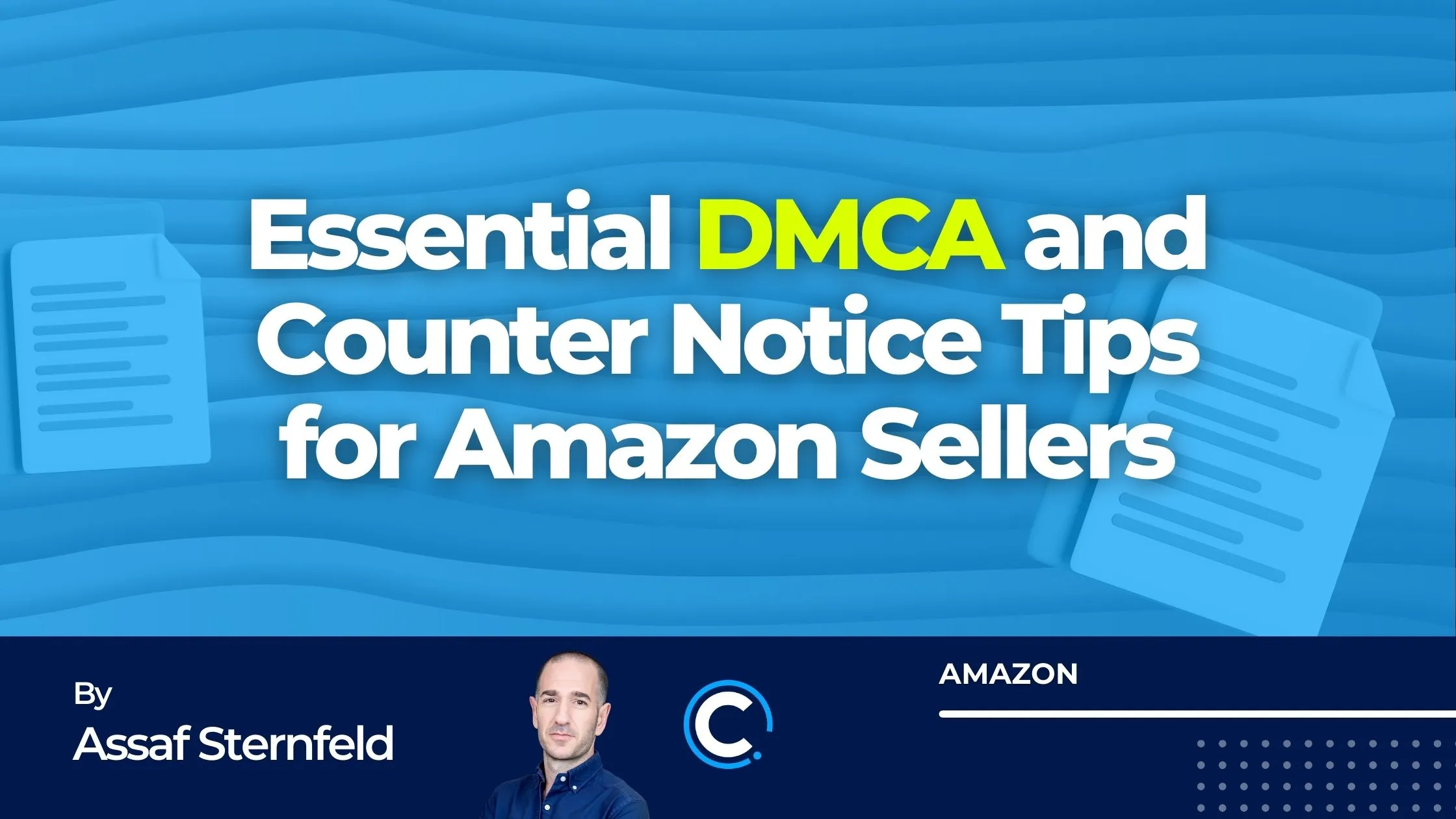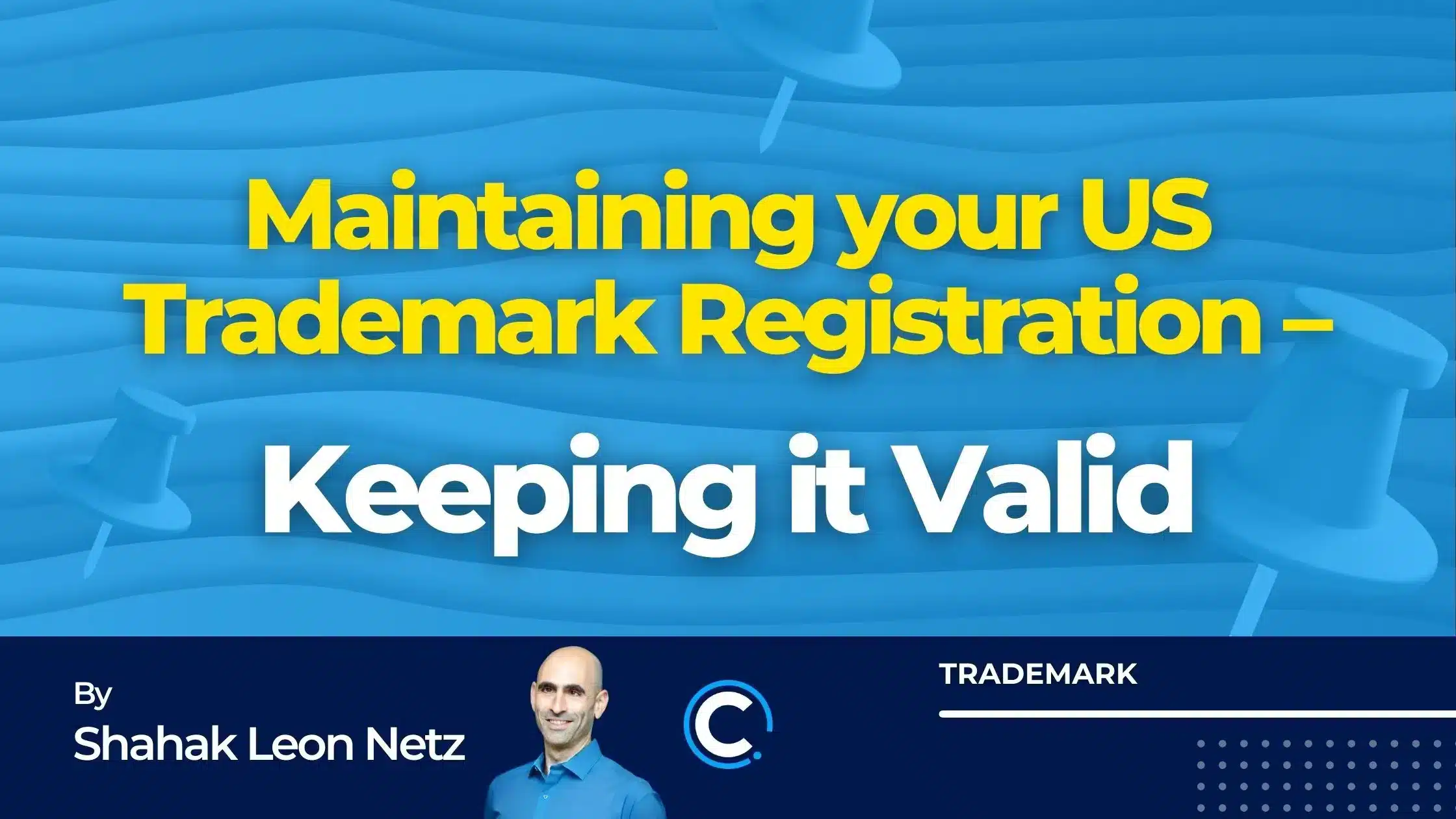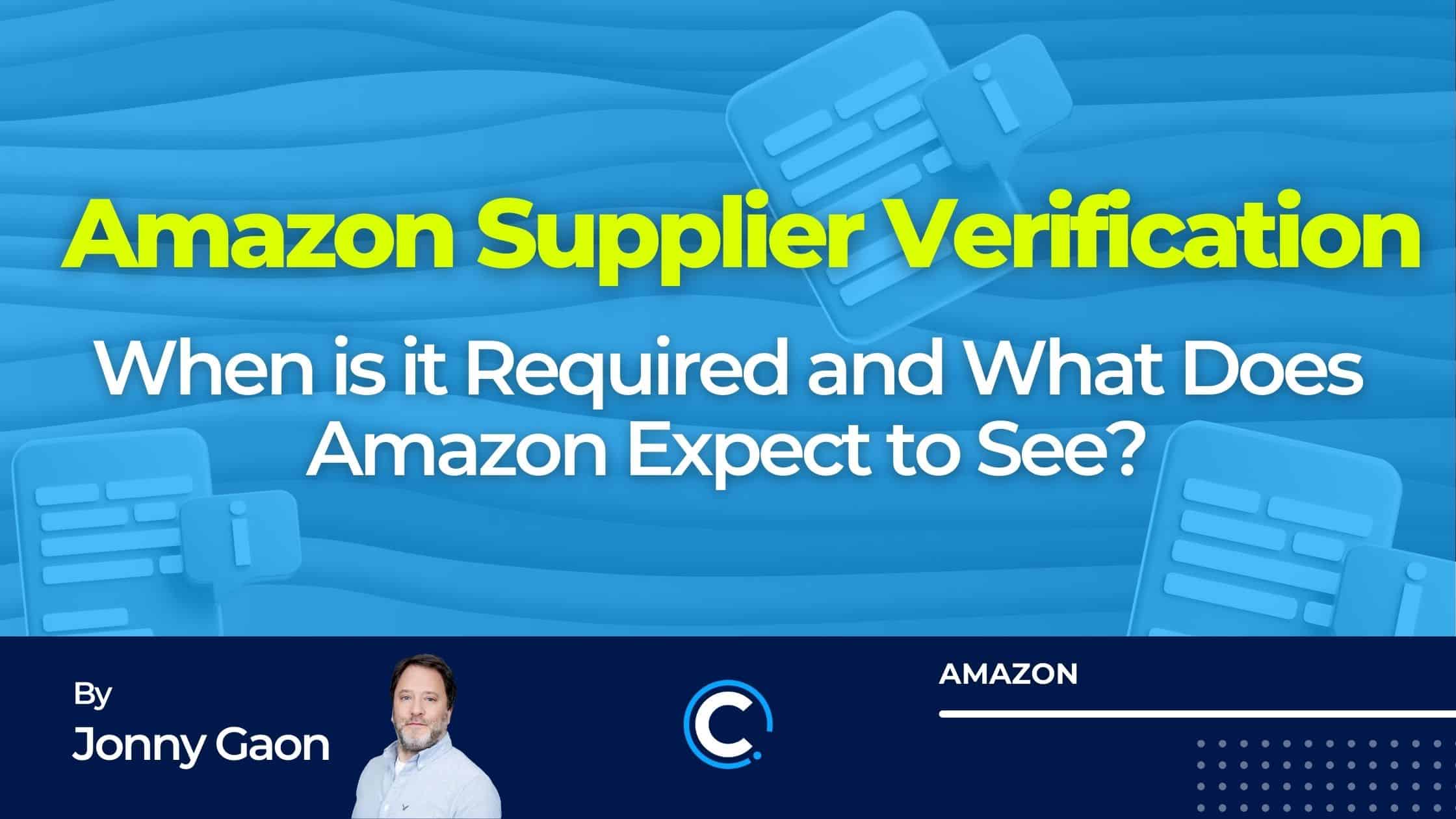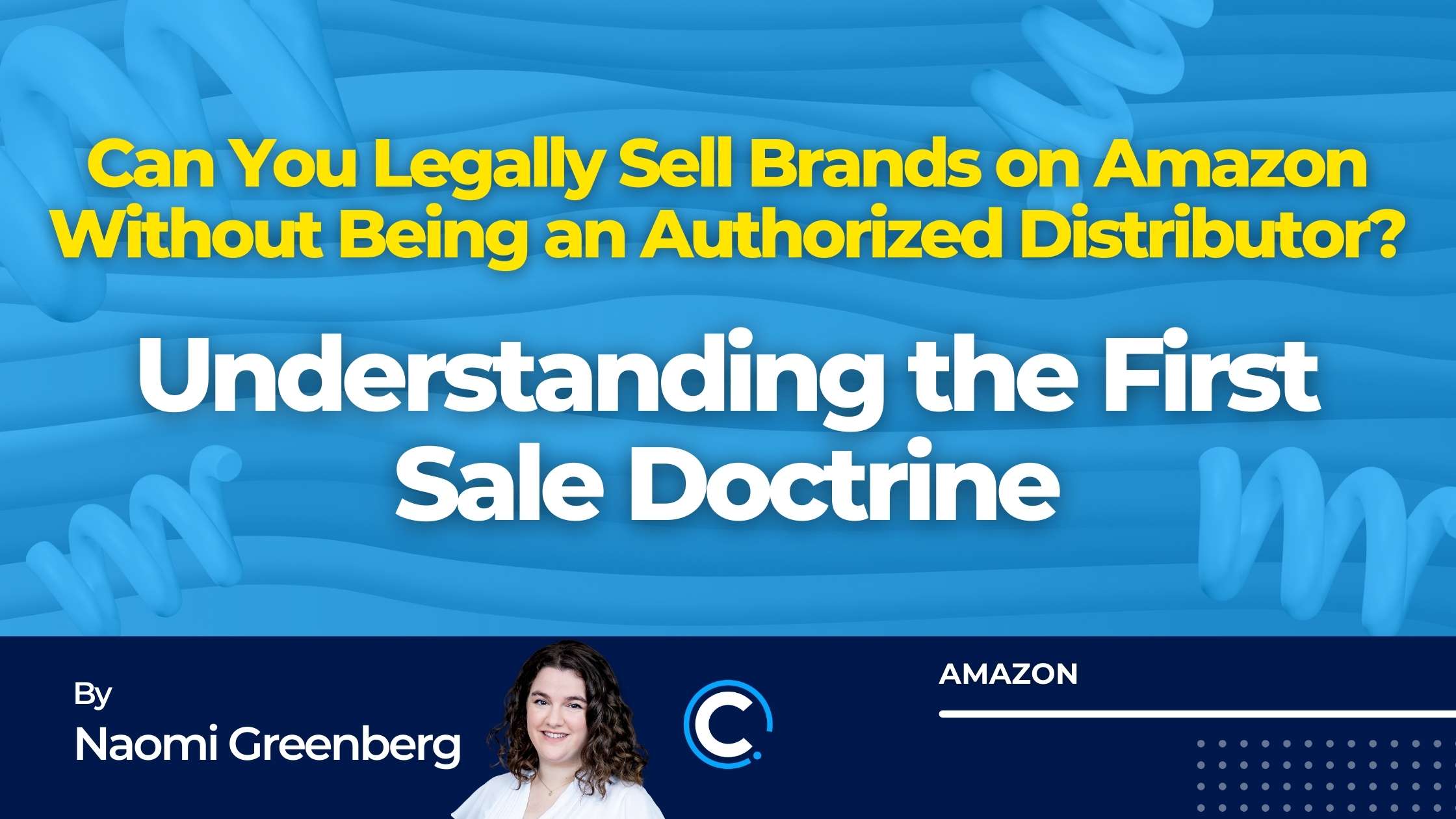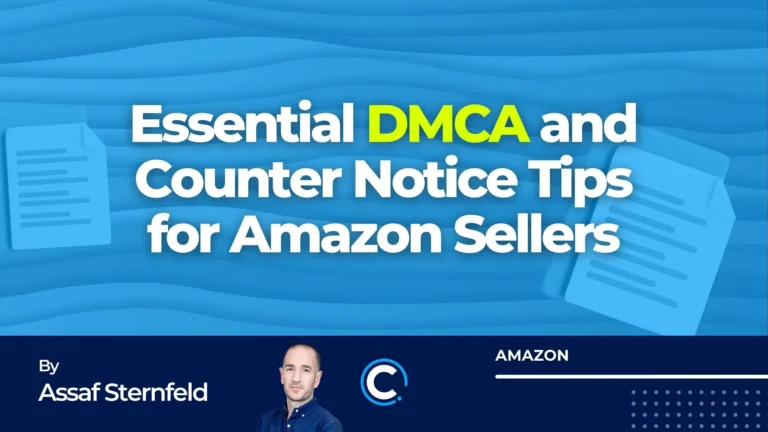
Table of Contents
Understanding the Digital Millennium Copyright Act (DMCA) is crucial for Amazon sellers. The act serves to enforce intellectual property (IP) laws in the digital environment, offering protection for your products while also posing potential legal challenges. This article aims to provide a clear and concise guide for sellers on how to effectively handle DMCA notices and file counter-notices when necessary.
What Is the DMCA and is it good for sellers?
The DMCA is a significant piece of legislation in the United States that safeguards creators and rights holders in the digital age.
For Amazon sellers, it’s a framework that offers both protection and obligation.
Protection Under the DMCA:
As a seller, the DMCA gives you the right to protect your original works from unauthorized use on Amazon’s platform. This includes anything you’ve created that is eligible for copyright, such as images, texts, listing descriptions, bullet points, or products with unique graphic designs. If you notice another seller using your copyrighted material, you can file a DMCA takedown notice to have the material removed. Note that the DMCA legislation does NOT cover trademarks, or patents.
Obligations and Liabilities:
Conversely, the DMCA also outlines your responsibilities to respect the IP rights of others. If you receive a DMCA takedown notice, it’s alleging that you may have infringed upon someone else’s copyright. It’s crucial to take such notices seriously, as they can affect your seller standing and may lead to the removal of your content, listing suspension or in severe cases, suspension of your Amazon account.
The Safe Harbor Provision
One of the core components of the DMCA that affects Amazon sellers is the ‘safe harbor’ provision. This shields online service providers, like Amazon, from liability for the copyright-infringing actions of its users, provided they respond appropriately to takedown notices. In other words: If Amazon reacts promptly to a take down complaint, it won’t be found responsible for the infringement on tis platform. Therefore, when a takedown notice is issued, Amazon is obliged to act to maintain its safe harbor status. This often means your listings can be removed swiftly, sometimes without prior warning.
What should you do if you receive a DMCA Takedown Notice?
When an Amazon seller receives a DMCA notice, it’s typically because a rights holder has identified potential unauthorized use of copyrighted material. The infringement could be, for instance, use of a third party’s photo, use of a competitor’s bullet point or description, copying the packaging graphic design, etc.
Immediate Actions Upon Receipt:
- Review the Notice: Carefully read the DMCA notice to understand the specific claims. Identify what the specific copyright infringement claims are. Look for any possible errors or misunderstandings in the reported infringement.
- Evaluate the Validity of the Infringement Claim: Before taking any action, it’s crucial to assess whether you are actually infringing on the copyright as claimed in the DMCA notice.
Have you used third parties’ photos? Have you copied their bullet points? Their product descriptions? If you have any doubts about whether or not you are infringing, it’s wise to consult with a lawyer specializing in intellectual property law. They can provide guidance on the legitimacy of the claim and your options. From our experience, most sellers initially believe they are not infringing any Copyrights. However, following our analysis, it often turns out they are, in fact, infringing third parties’ rights. - If it turns out that you are NOT infringing, you might want to consider submitting a Counter Notice, as further outlined below. Additionally, you have the option to appeal to Amazon, demonstrating that no infringement has occurred. Support from a letter by your attorney could be beneficial. Alternatively, you could contact the rights owner directly to request a withdrawal of the complaint.
- If you have indeed infringed upon a third party’s rights and the complaint is justified, you could negotiate with the rights owner. This might involve paying a licensing fee for each product sold or selling off the remaining inventory. Your primary aim should be to secure a retraction of the complaint to prevent any damage to your account.
Your right to a DMCA Counter Notice
If you believe, beyond any doubt, that you have not violated any copyrights, you should consider filing a DMCA Counter-Notice. This is a formal declaration that you have either the right to use the content or that the takedown notice was misapplied to your content.
Once you file the counter notice, the burden is shifted back to the complainant, which is now required to file a lawsuit. If such lawsuit is filed within 10-14 days, the listing will remain suspended. If the rights owner does not file a lawsuit on time, the listing will be reinstated.
Therefore, filing a counterclaim is risky, as the rights owner is compelled to file a lawsuit to protect their copyrights. Facing an Amazon suspension is one thing; dealing with a lawsuit is another. Ensure that you have a solid legal basis before proceeding with a counterclaim.
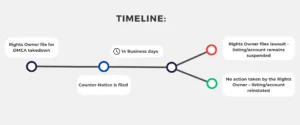
What should the counter notice include?
- Identification of the Material: Clearly describe the material that has been taken down and state your position as to why the takedown notice was misapplied to this material.
- Legal Grounds: Affirm under penalty of perjury that you have a good faith belief that the listing was removed as a result of a mistake or misidentification.
- Consent to Jurisdiction: Include a statement that you consent to the jurisdiction of the Federal District Court for the judicial district in which your address is located, or if outside the U.S., for any judicial district in which the service provider may be found.
- Contact Information: Provide your contact information, including your full name, address, telephone number, and email address.
- Physical or Electronic Signature: Sign the counter-notice to validate it.
Real Insights: Successful DMCA Counter-Notice Cases
Case Study 1: Overcoming a Fraudulent DMCA Claim
In a notable instance, we represented an Amazon seller who faced a DMCA takedown notice challenging their use of specific content, which, in reality, was their original creation. The seller approached us for legal guidance, and upon thorough investigation, we uncovered a deceitful tactic used against our client: The individual who filed the DMCA notice had set up a counterfeit website, uploading our client’s content to it. This fake site was then used as ‘evidence’ in their DMCA claim, attempting to portray our client as the infringer.
Our legal team prepared a DMCA counter-notice. This document not only challenged the validity of the claim but also demonstrated the fraudulent nature of the website and affirmed our client’s rightful ownership of the content.
Our intervention was highly successful, resulting in the reinstatement of our client’s Amazon listing.
Case Study 2: The Risks of Misjudging Infringement in a DMCA Dispute
In another instance, we encountered an Amazon seller who received a DMCA notice but was unaware of their infringement. Without realizing the seriousness of the situation, the seller filed a counter notice independently, without seeking legal consultation. This action unfortunately escalated to a lawsuit filed against them.
It was at this juncture that the seller approached us for assistance. Our team entered into negotiations with the rights owner, and thankfully, we were able to resolve the dispute. However, this resolution came at a relatively high cost for the seller in terms of legal fees for dealing with the lawsuit and the negotiations.
This case demonstrates the importance of consulting with an intellectual property attorney before responding to a DMCA notice. Had the seller sought professional legal advice initially, he would have been informed of his infringement and advised on a more appropriate course of action, potentially avoiding the lawsuit and its associated costs.
Conclusion
The key takeaways from this article are clear: understand your rights and obligations under the DMCA, act swiftly and thoughtfully when receiving a DMCA notice, and approach the counter-notice process with thoroughness and legal acumen.
The DMCA, while providing a necessary mechanism to protect intellectual property, also requires sellers to be vigilant and proactive. It’s crucial to maintain a comprehensive understanding of your product’s IP rights and to have a strategy in place for addressing potential infringements, either against you or by you.

